Companion herbs are some of the most rewarding plants you can grow in your garden. Not only do they save space, but they also improve the health and flavor of nearby crops while keeping pests at bay.
Many attract pollinators and beneficial insects, giving your garden a natural boost without chemicals.
If you love cooking with fresh herbs, planting them together makes harvesting simple and enjoyable. Even with limited space, you can grow them in beds, pots, or containers and enjoy a steady supply of flavor right outside your door.
Here are 10 of the best companion herbs to grow for healthier plants, tastier harvests, and a more vibrant garden.
#1 Parsley
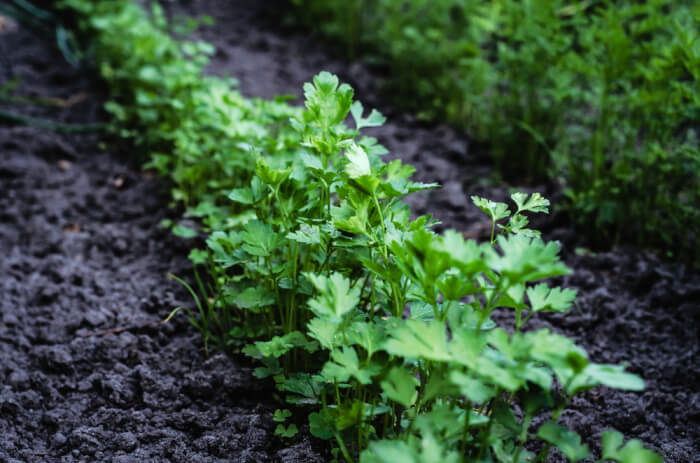
Parsley is a versatile herb that not only enhances meals but also attracts ladybugs, damselflies, and other helpful insects. You’ll find it thrives when grown near asparagus, carrots, and tomatoes.
To get the most from it, keep the soil moist and provide partial shade in hotter climates. It pairs beautifully with herbs like basil, marjoram, rosemary, and thyme.
Harvest often by snipping the outer leaves, which encourages new growth. Adding parsley to your herb patch will make both your cooking and your garden more rewarding.
#2 Thyme
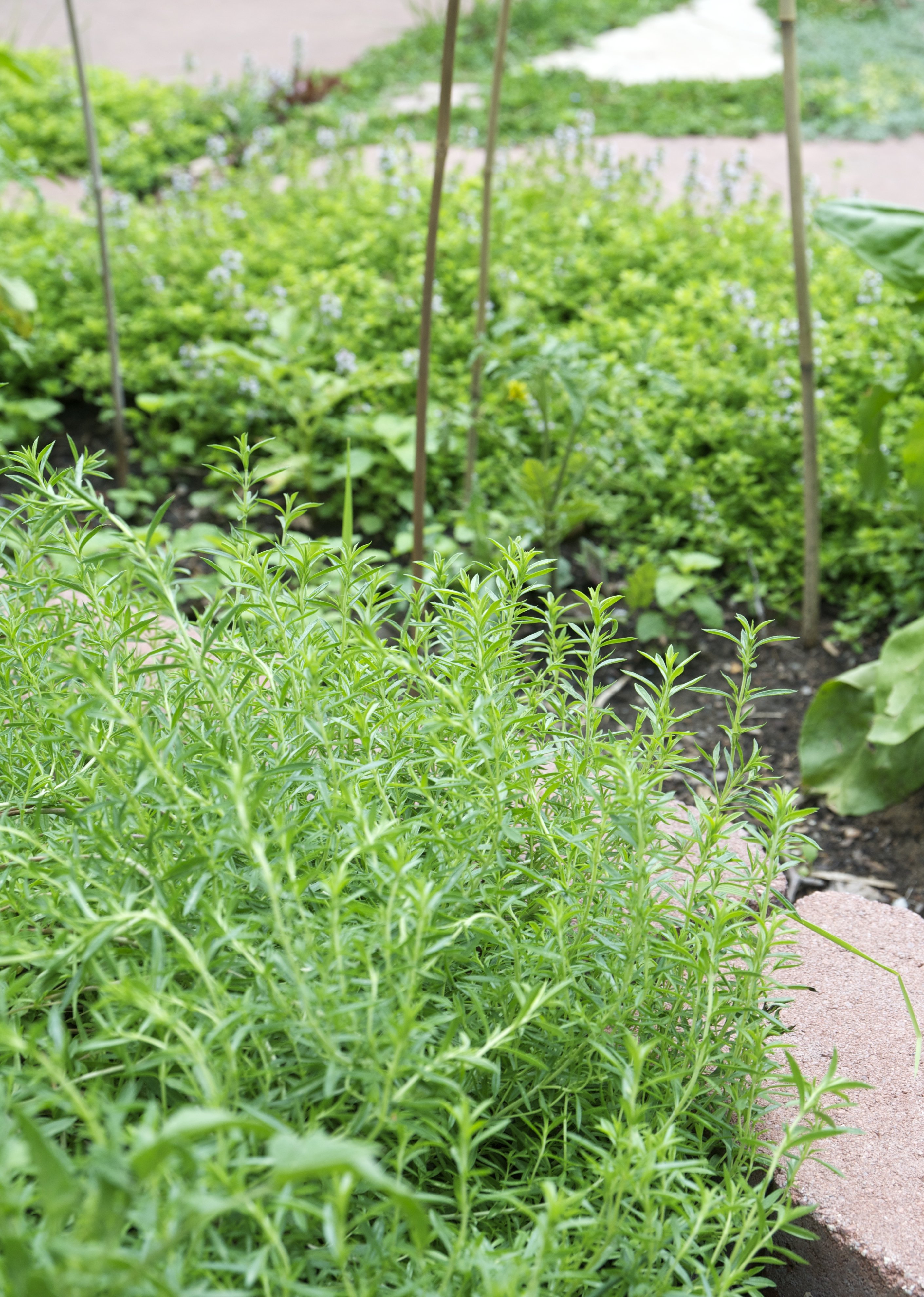
Thyme is a sun-loving herb that fills the garden with fragrance while supplying you with fresh leaves year-round. Its resilience makes it one of the easiest to grow alongside rosemary, oregano, sage, and lavender.
Plant it in well-draining soil and water sparingly to avoid root problems. Regular trimming helps it stay compact and bushy.
With thyme in your garden, you’ll enjoy its strong flavor in soups, roasts, and teas. It also makes a natural ground cover, adding texture between taller plants.
#3 Oregano
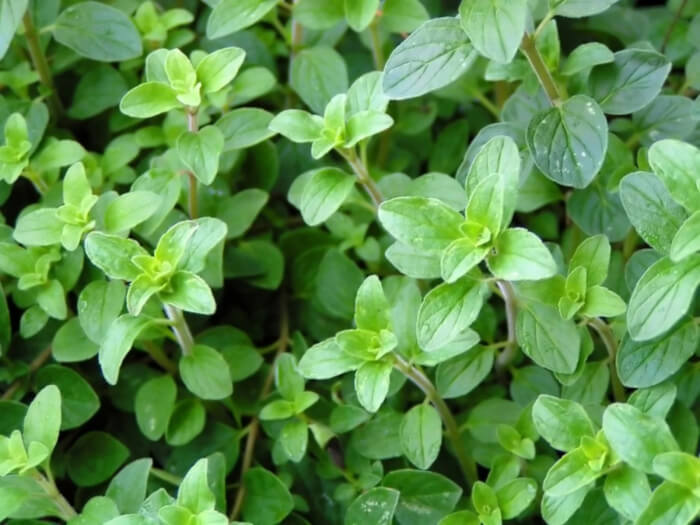
Oregano is a flavorful herb that doubles as a natural pest deterrent, drawing mealybugs and aphids away from other crops. It grows well with rosemary, thyme, and basil, creating a strong Mediterranean mix for your garden and kitchen.
Choose a sunny location with light soil for best results. Water moderately and trim often to keep it lush and productive.
Fresh oregano leaves can be used immediately in sauces or dried for later use. Its strong aroma also makes it a favorite with pollinators.
#4 Basil
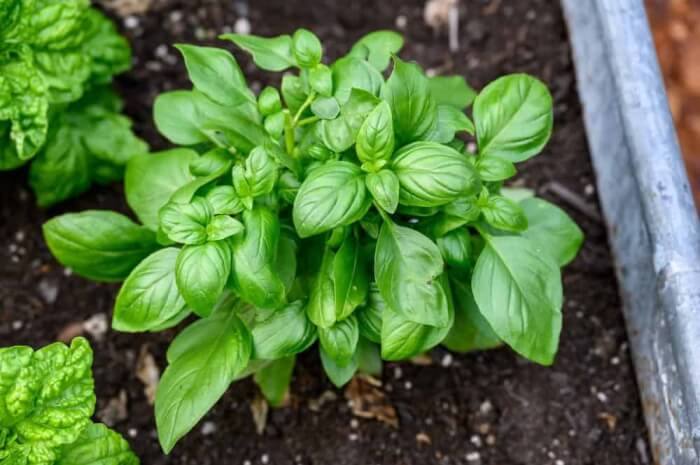
Basil is famous for its ability to repel mosquitoes and flies, making it as practical as it is tasty. It thrives when planted alongside parsley, oregano, and chives. Keep the soil evenly moist and give it plenty of sun to enjoy lush leaves.
Pinch off flower buds regularly so the plant focuses on leaf production. Basil is excellent for salads, sauces, and teas, so you’ll always have a reason to harvest. Its fragrance alone can lift the feel of your entire garden.
#5 Marjoram
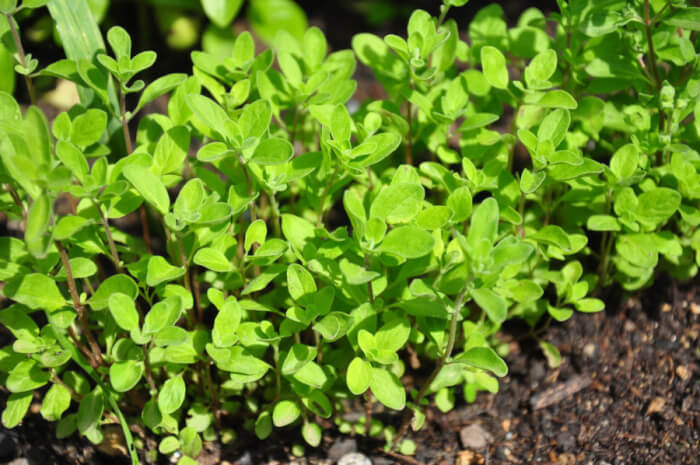
Marjoram is a gentle, aromatic herb that blends beautifully with a wide variety of herbs and vegetables. It thrives with rosemary, sage, oregano, and chives, supporting healthy growth in your garden.
Grow it in a sunny position with light, well-drained soil for best results. Regular harvesting helps maintain its shape and stimulates new leaves.
Its sweet flavor pairs well with meat, fish, and vegetable dishes. Marjoram also attracts pollinators, making it a wonderful addition to mixed herb gardens.
#6 Dill
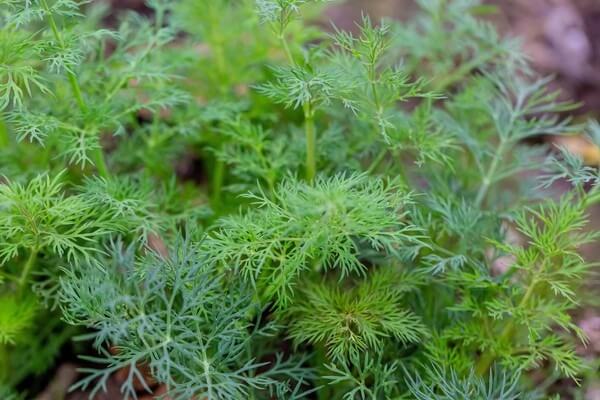
Dill adds a delicate texture to the garden with its feathery leaves and umbrella-shaped flowers. It grows well with chives, thyme, and lemon balm, and helps repel common pests naturally.
Plant it in full sun and keep the soil lightly moist to ensure steady growth. Harvest leaves regularly to encourage branching, and save the seed heads for pickling.
Dill’s bright flavor enhances salads, fish, and soups, making it a kitchen essential. Its flowers also attract beneficial insects like lacewings and ladybugs.
#7 Rosemary
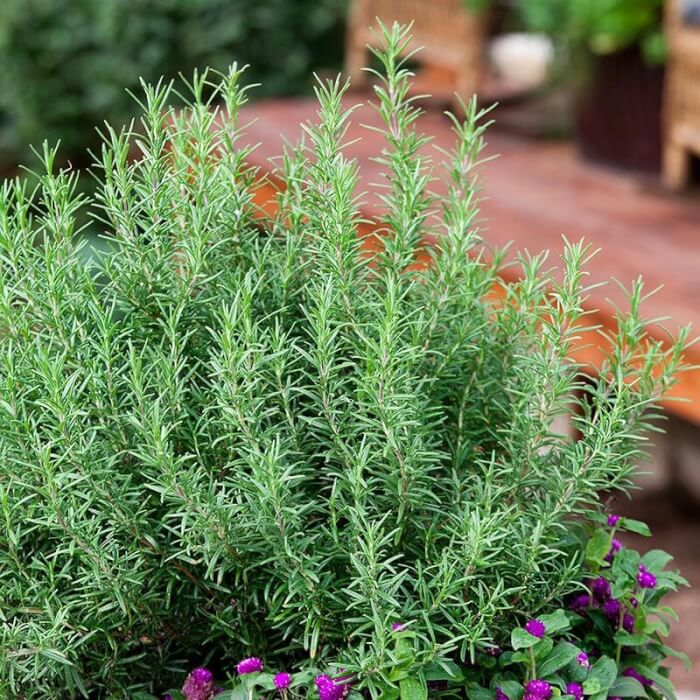
Rosemary is a hardy, fragrant herb that provides structure and aroma in any garden. It thrives with basil, sage, oregano, and thyme, making it perfect for companion planting.
Choose a sunny spot with well-drained soil, and avoid overwatering to prevent root rot. Prune regularly to encourage dense, healthy growth.
The leaves are perfect for seasoning roasts, bread, and oils. As a bonus, rosemary’s strong fragrance naturally keeps many insect pests away.
#8 Sage
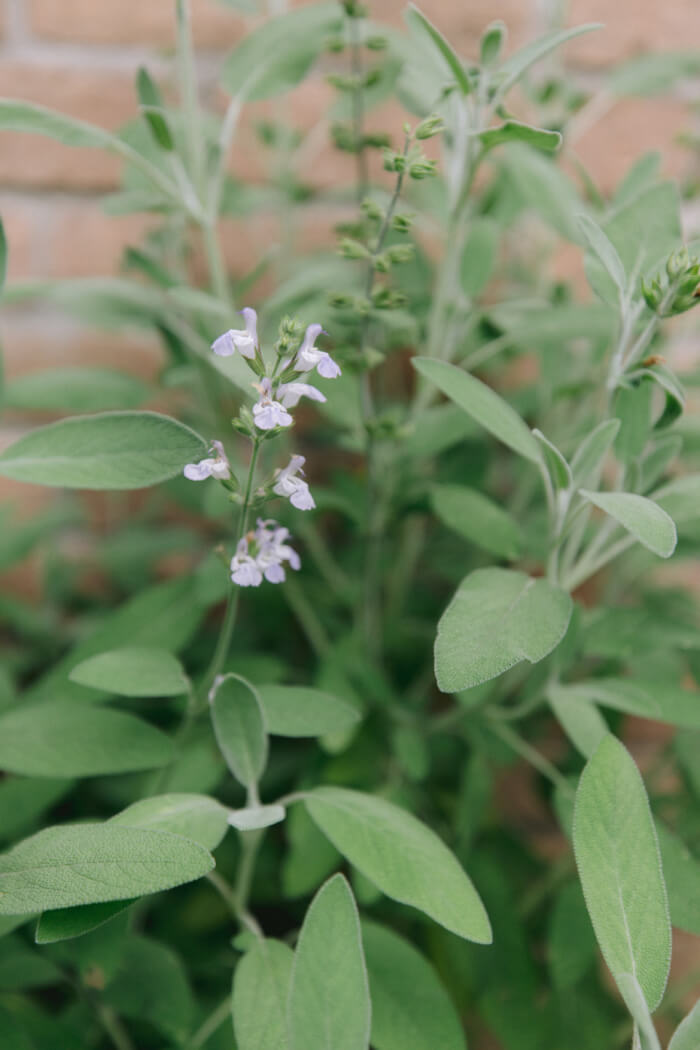
Sage is a robust herb with silvery leaves that thrives in full sun and well-drained soil. It pairs beautifully with lemon thyme, parsley, oregano, and lavender, improving growth while deterring carrot flies and cabbage moths.
Keep watering moderately, as sage does not like soggy soil. Prune after flowering to maintain shape and promote new shoots.
Its earthy flavor makes it a staple in stuffing, meats, and teas. Growing sage will also bring more pollinators into your garden.
#9 Chives
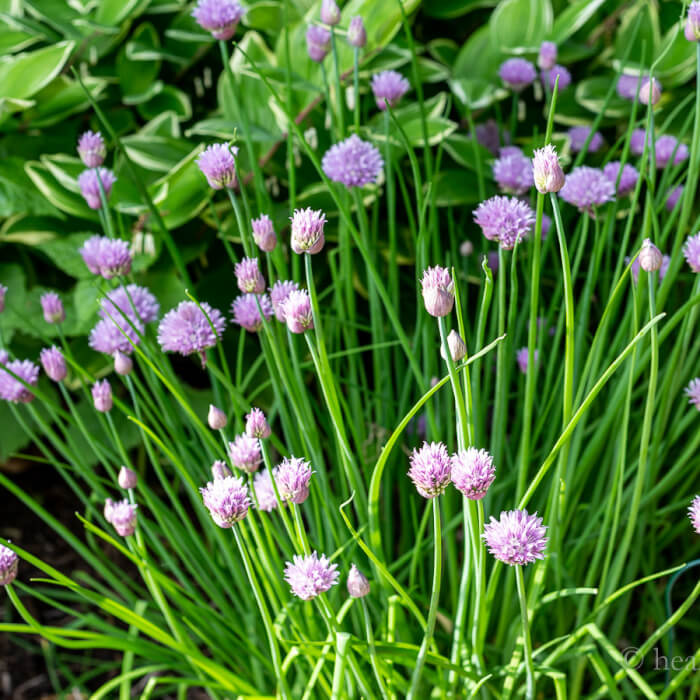
Chives are cheerful herbs with edible purple blooms that brighten any garden. They thrive with parsley, dill, and marjoram, boosting both flavor and growth. Plant them in rich, well-draining soil and water regularly for best results.
Harvest by snipping leaves close to the base, which encourages new growth. The flowers are also edible, adding a mild onion flavor to salads. Chives are hardy and return year after year, making them a long-lasting companion herb.
#10 Bay
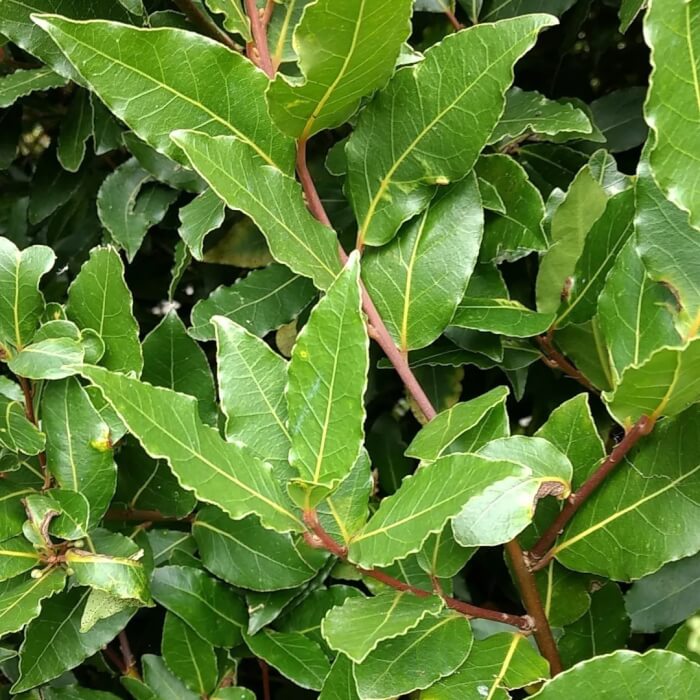
Bay is a classic herb known for its glossy leaves and strong aroma that elevates soups, stews, and sauces. It pairs especially well with rosemary, thyme, and parsley, forming the traditional seasoning blend.
Bay grows happily in containers, which makes it easy to move indoors during colder months. Provide full sun or partial shade and prune lightly to keep its shape.
Harvest mature leaves and dry them for year-round use in cooking. Adding bay to your garden brings both beauty and utility.
